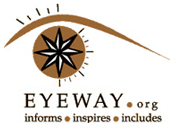The Reserve Bank of India (RBI), through a circular dated August 14, 2025, directed all regulated entities—including banks, non-banking financial companies, housing finance companies, all-India financial institutions, credit information companies, payment system providers, and authorised persons in foreign exchange—to comply with the Supreme Court’s order dated April 30, 2025, in Pragya Prasun & Ors. vs Union of India and Amar Jain vs Union of India & Ors.. The order focuses on ensuring accessibility in the digital Know Your Customer (KYC) process for persons with disabilities, particularly those with visual impairments or facial disfigurements.
The Supreme Court issued several directives to make digital KYC processes inclusive. First, all regulated entities (REs) must follow prescribed accessibility standards and appoint nodal officers to oversee compliance. They must also undergo periodic accessibility audits by certified professionals and include blind persons during user acceptance testing of apps, websites, or new digital features. A significant part of the directions concerns alternative verification mechanisms. Instead of relying solely on methods such as “blinking of eyes” for liveness detection in video-based KYC, entities must adopt other accessible modes. Customer due diligence and onboarding can be conducted using video-based customer identification processes (V-CIP) without mandatory eye-blinking requirements. Additionally, KYC templates should record details of disability type and percentage to enable accessible services, while acceptance of thumb impressions in digital KYC is mandated.
The RBI has been directed to amend its Master Directions on KYC, 2016, to enhance OTP-based e-KYC authentication and clarify that video KYC can be conducted without restrictive biometric requirements. Paper-based KYC must also continue as an accessible alternative for those unable to complete digital procedures. Other measures include ensuring the availability of sign language interpretation, closed captions, audio descriptions, Braille formats, voice-enabled services, and easy-to-read versions of official communications. Regulated entities must procure or design ICT products and services in line with accessibility standards notified by the Bureau of Indian Standards. Furthermore, online platforms, e-governance systems, and digital payments must comply with the Web Content Accessibility Guidelines (WCAG) 2.1 and Indian government website guidelines.
he Supreme Court also directed authorities to establish mechanisms for sharing KYC information across entities via the Central KYC Registry (CKYCR) to reduce repetitive processes for customers. A grievance redressal system specific to accessibility issues must be put in place, along with human review of rejected KYC applications where technical barriers prevent successful verification. Dedicated helplines providing voice or video assistance to disabled customers in completing KYC are also to be established. Awareness and training are another key element. The Court directed RBI and other respondents to run public campaigns through press releases, advertisements, and social media to raise awareness about accessible KYC methods. Regulated entities must display notices informing customers about alternative procedures. Additionally, disability awareness and sensitivity training modules must be included in e-learning programs for officials handling customer onboarding and compliance.
Finally, RBI has been tasked with monitoring strict adherence to these directives. It must ensure that all regulated entities implement the accessibility measures effectively, and initiate periodic campaigns to promote awareness. In essence, the Supreme Court order, followed up by the RBI’s circular, seeks to transform the digital KYC process into one that is inclusive, barrier-free, and accessible to persons with disabilities. This includes changes in verification methods, mandatory accessibility standards, alternative communication formats, improved grievance redressal, and greater institutional accountability. The directions reinforce obligations under the Rights of Persons with Disabilities Act, 2016, and aim to create a more equitable financial ecosystem.
Reserve Bank of India RBI/2025-26/74 DoR.MCS.REC.47/01.01.028/2025-26 Dated: August 14, 2025 All Banks All Non-Banking Financial Companies (including Housing Finance Companies) All All-India Financial Institutions All Credit Information Companies All Payment System Providers/ System Participants All Authorised Persons in Foreign Exchange Compliance with Hon’ble Supreme Court Order dated April 30, 2025 in the matter of Pragya Prasun and Ors. vs Union of India (W.P.(C) 289 of 2024) and Amar Jain vs Union of India & Ors. (W.P.(C) 49 of 2025) Attention of regulated entities is drawn to the Order of the Hon’ble Supreme Court dated April 30, 2025 in the matter of Pragya Prasun and Ors. vs. Union of India (W.P.(C) 289 of 2024) and Amar Jain vs. Union of India & Ors. (W.P.(C) 49 of 2025). All regulated entities shall undertake appropriate measures to ensure compliance with the above Supreme Court Order, as applicable.
(Veena Srivastava)
Chief General Manager
https://taxguru.in/rbi/rbi-mandates-alternative-kyc-verification-methods-disabled-customers.html

Facebook comments